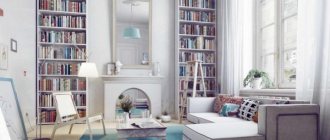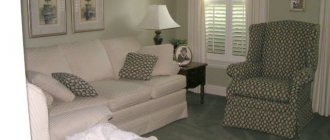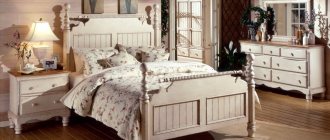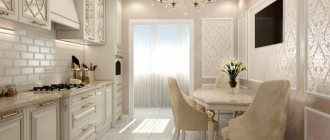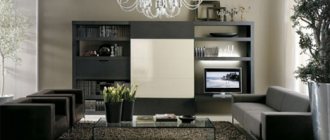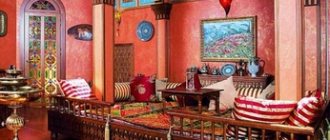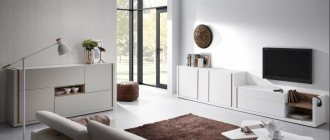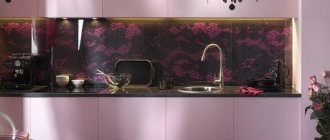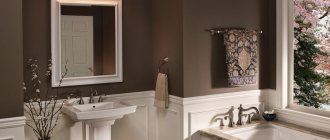Click to share
Every country and every culture has a unique style when it comes to interior design. But with globalization, the world is increasingly interested in inspiring different cultures. The Arabic style is perhaps the most prominent ethnic style in both architecture and interior design. Created and developed under the strong influence of Islam, Arab-Muslim culture, however, has retained its identity and integrity. Today, the Arabic style has more and more fans in Europe due to the clear trend towards luxury and elegance.
There is a misconception that some interior design styles are easy to achieve. Some believe that hanging cherry blossom paintings or using beds and low tables is enough to call the interior "Japanese style", or using carpets, curtains and silks for an Arabian style.
In fact, Arabic interior style , like other design themes, means much more. This means developing rules, studying the traditions of the people concerned (which go back several thousand years) and applying them even on a smaller scale.
You don't need to follow this theme throughout your entire living space, just decorating a living room or bedroom is enough, but do it in a pure Arabic style, where the houses are full of details, with many luxurious items, with extravagant and exotic furniture that makes you feel like you are just walking into castle.
Arranging a room in an oriental style involves the use of numerous decorative accessories, colored textiles, in which floral and geometric motifs predominate, and which can be arranged in an unusual way on the floor, on the walls and even on the ceiling of the room. Creating a mystical, whimsical atmosphere is what Arabic interior design knows best, allowing you to use any luxury item in any room you want.
Few design styles can match the Arabic style's ability to transform a bland, seemingly empty space into a luxurious one using layers of color and texture.
Oriental style in the interior - colors and materials
The color range is extremely rich - from radiant yellow, bright red and bright orange to azure blue - and the materials are precious and natural - silk, organza, cotton or brocade . The color palette in the Arabic style can be as varied as in any other style. The most common colors are warm neutrals.
Using warm neutrals for your walls will allow accent colors and patterns to stand out even more. You can also add cool tones like turquoise and sparkling emerald greens. A bright shade can be used on an accent wall such as orange or Moroccan red.
Use textured paint or add texture with a powder additive that will give the wall a tile-like texture. You can get a rough surface for your walls by using drywall, which will help you create an uneven look. Moroccan patterned wallpaper can do wonders for adding depth and focus to a room, and shelves placed on the wall can also create an interesting pop of color as well as adding useful storage space.
Other colors you should consider: beige, almond, wheat, curry, salmon, cinnamon, plum, chocolate, purple, gold, coral, rust, terracotta, ocher, olive and blueberry . In Arabic style you can never have enough flowers.
Even a souvenir or accessory, no matter how small it may be, will reflect oriental traditions. The color combinations are also shocking. You will find mixtures of blue with cherry, brown with violet, plum with ocher, terracotta with blue, all at one end, with intense gold (the color of prosperity and luxury). We can say that this is an obsessive cause that occurs on all surfaces: in curtains, on carpets, on the edges of mirrors and even on walls decorated with gold bas-reliefs.
Arabs do not like smooth surfaces and monotonous patterns. You can decorate the walls and ceilings with wooden mosaics, forming geometric shapes, or you can choose depending on your budget.
You can choose traditional white, which will give the space a fresh and shiny look, or neutral colors in shades of sand dunes, desert and sunsets. Either way, keep the colors in the main palette and don't overcrowd the walls, as the structure should allow the colors to flow throughout the space and depending on the accessories you choose. Do everything in moderation and never think that if you don't have enough flowers, you haven't achieved your goal.
Instead, for an authentic "look" you can use layers. Throw in different sized pillows here and there, mix colors and textures, and add a variety of fabrics and/or rugs. Another tip: try to match the color of the floor to the color of the walls and ceiling. This will help you stay on track.
Arabic style of apartment interior design
Excessive luxury, the presence of architectural details with carvings and gilding, painted with ceramics - all this defines the Arabic design style. But in comparison, the Asian style seems ascetic. It is characterized by harmony of space and laconic use of all details.
Oriental interior style is one of the most exotic and provocative designs. Its popularity can be explained by the harmonious combination of Eastern and European standards of comfort.
Oriental style with an Arabic twist is the most interesting design option. It personifies peace of mind, harmony and tranquility against the backdrop of exquisite luxury and rich beauty. That's what we'll talk about.
When creating an oriental style at home, it is worth taking into account every decorative detail that requires a special stylistic selection and significant elaboration.
The interior in the Arabic style is manifested in beauty
After all, the interior in the Arabic style is manifested precisely by the beauty and luxury of absolutely all the details that characterize it.
Furniture in oriental style
Furniture was rarely used in traditional Arab culture and consisted primarily of leisure items and safes used to store clothing, textiles, and other personal items. The term sofa comes from the Arabic word sufah, which means bench or platform. Wooden furniture is usually decorated with intricate carved abstract and geometric patterns. Parts of pieces of furniture were cut, and the gaps thus created were filled with various types of wooden inserts, such as walnut, rose, lemon or peach.
Furniture in dark colors, with classic and carved lines, contrasts with light walls, while leather or mosaic stools and silver decorations complement the decorative theme. The Arabic style is full of pieces for every square centimeter and is filled with a whole series of specific fancy decorations. These combinations, which have remained virtually unchanged for centuries, are called arabesques , which means a symbiosis of geometric and floral shapes inscribed in strict forms.
Unlike the Western world, seating furniture was not an element of Arabic decor until a few decades ago. Floor cushions, small benches or platforms were used. In addition to chairs and sofas, Arabic furniture usually includes polygonal tables, partitions, carved doors and drawers.
Textile
Perhaps the most important element in Arabic design is the use of colored textiles in a wide variety of patterns and textures. Use layers of beautiful fabrics and textiles, including Persian rugs, pillows, floor cushions, wall hangings and curtains. In many Arabic-style interiors, the walls and ceilings are covered with fabrics, creating a tent-like effect. Textiles can be placed above tables, drawers and benches or framed as wall art.
Luxurious fabrics include organza, brocade and velvet in a combination of narrow stripes and wide or zigzag patterns, Arabic calligraphy and various abstract or geometric patterns. Add fringe and tassels to pillows and drapes, or look for pieces that already have them.
Using layers of luxurious fabrics, textures, colors and patterns is essential. This can be done by resorting to heavy curtains, rich upholstery, Persian rugs, plush and floor cushions, lustrous and floating silks, fine satins and soft and fine cashmere that enliven every corner of the room.
Accessories
Fine copper tea sets, brass or nickel trays, decorated ceramic vessels such as vases and urns, inlaid mirrors, stools, lanterns, beaded lamps, pillows, stylish hooks, high-necked vessels are staples when it comes to complete the decor in the Arabic style.
The main feature of the Arabic style is the absence of any indication of images with people and animals, and the Koran prohibits their use in any accessories. Therefore, do not use sculptures or other similar objects. But instead, you can take inspiration from oriental tales, use images with plant inscriptions and geometric shapes, or their famous calligraphic masterpieces, which often quote passages from holy books.
Interesting samovars, tea sets, and gold accents receive pride of place here. Other popular accessories include porcelain, semi-precious stones or garnishes. Metal or wooden chests, metal tables, taftals, mirrors and benches should not be missing. Look for interesting items that remind you of the wonderful Arab heritage.
Boxes or chests can be used as coffee tables. Don't slow down when decorating in Arabic style, this allows even the most whimsical visions to make room for decoration. Use opulent chandeliers, enchanting lanterns, ornate tapestries, sumptuous rugs, cascading plush curtains, extravagant furniture, textured layers of fabric, and don't forget pieces with lavish gold accents.
Oriental style is also defined by the use of furniture that has certain (family) traditions. For example, an antique library could fill a living room. Wicker beds are also high-impact items. For added Arabic style, you can use awnings and cushions in bright colors and different shapes to decorate the room.
It may look dated or too rustic, but a wall rug is always a fashion accessory. Made from natural fabrics with special prints, the carpet for wall decoration clearly resembles oriental style.
To define the oriental style, you can choose ivory objects. Thus, a lamp or a colorful painting whose frame is made from this material are just some of the objects that you can use to create an oriental ambiance in a room. A chandelier is an integral part of living room decoration. You can choose gold with lots of decorative details and curved lines.
Lighting
The intricate chandelier we mentioned earlier is always the focal point of an Arabic design, very large and bold, which will open up the space. Metal lamps suspended from the ceiling or placed on the floor add charm and mystique.
Candles are also used. The oriental interior is bright, but it is artificially lit. In modern styles, Arabic design rejects sunlight, considering it useless, so much attention is paid to curtains, stained glass and blinds. They can keep anyone away from prying eyes and effectively complement themed interiors without ruining their authenticity. So use dim, confusing light.
Moroccan and Turkish are perhaps the most famous models of this new style of interior design. There is also variety, which ranges from rustic Bedouin-style decor to lavish layered designs that evoke images from Arabian Nights legends.
Modern Arabic interior design is actually quite minimalist and it has not gained popularity like the one we have presented to you today. When we think of Arabic style interior design, we can only associate it with opulence.
Main features of the style
This style does not allow for uncluttered surfaces - absolutely everything is decorated with a pattern.
It is not permissible to place paintings depicting plants, people, or animals in the house.
The painting is a strange, outlandish pattern, which consists of various kinds of phrases of the Holy Quran, and is decorated with ornaments.
The highlight of the pattern used is the clarity of the lines with a description of each detail. Arabesque is made in bright and rich colors, for example, black, scarlet, emerald, crimson.
